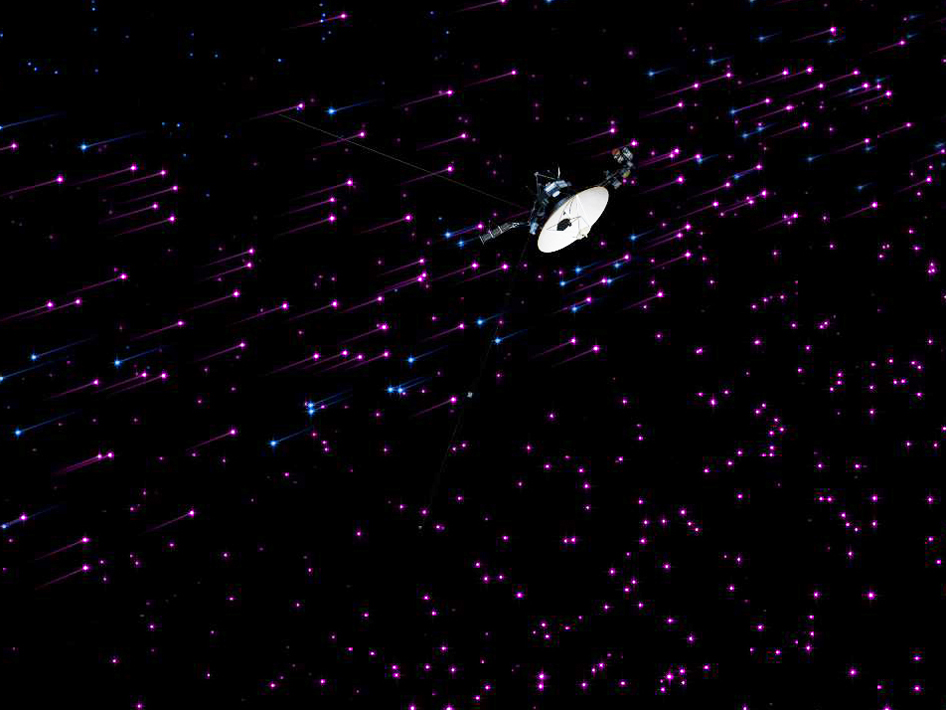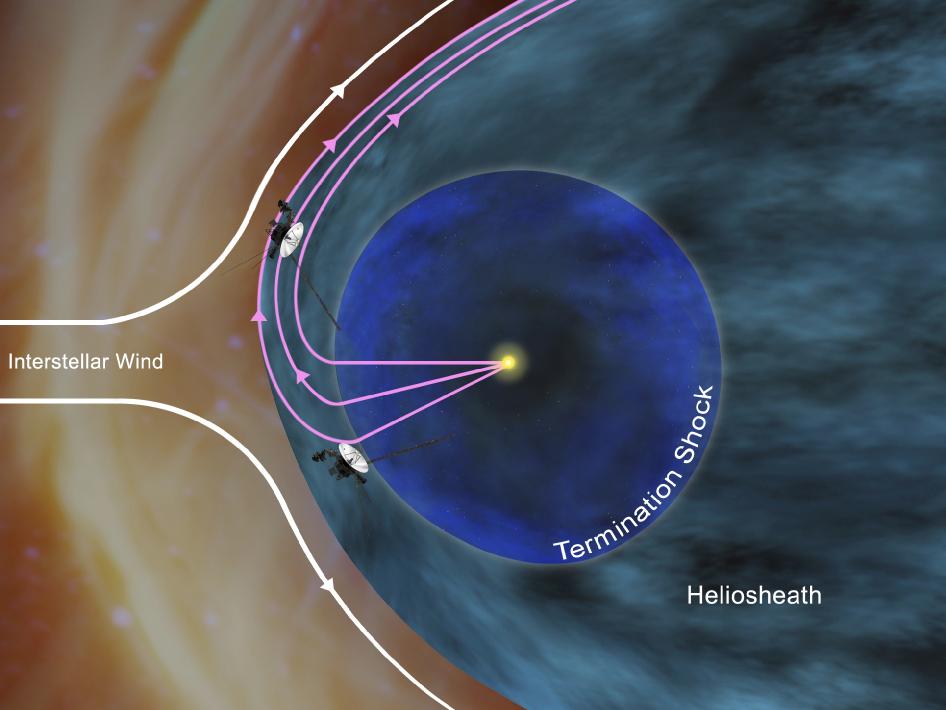
After 11 billion miles traveled and 35 years spent outside Earth’s atmosphere, NASA’s Voyager 1 spacecraft is about to cross the sun’s heliosphere and enter into interstellar space.
This is the farthest we’ve ever journeyed outside our home planet, and the frontiers of the solar system are still vast mysteries. Even crossing the line between our “home” and deep space is generating loads of new information for researchers.
Interstellar space is the vast expanses between stars and star systems. Beyond the borders of our own solar system, this space holds amounts of ionic, atomic, and molecular gases; dust and cosmic rays; and highly energetic charged subatomic particles.
NASA scientists say Voyager 1 has actually reached those borders, a previously uncharted region that acts as a highway for magnetically charged particles between the magnetic field lines of our own sun and the field lines in interstellar space.
“This connection allows lower-energy charged particles that originate from inside our heliosphere — or the bubble of charged particles the sun blows around itself — to zoom out and allows higher-energy particles from outside to stream in,” reads NASA’s latest update on the Voyager mission. “Before entering this region, the charged particles bounced around in all directions, as if trapped on local roads inside the heliosphere.”
Here’s an artist’s rendering of the region:

“Although Voyager 1 still is inside the sun’s environment, we now can taste what it’s like on the outside because the particles are zipping in and out on this magnetic highway,” said Voyager project scientist Edward Stone in the update. “We believe this is the last leg of our journey to interstellar space. Our best guess is it’s likely just a few months to a couple years away. The new region isn’t what we expected, but we’ve come to expect the unexpected from Voyager.”
Voyager has been picking up particles from this magnetic highway off and on since the middle of this year. But back in August, the environment stabilized, causing scientists to hypothesize that interstellar space was nigh.
“If we were judging by the charged particle data alone, I would have thought we were outside the heliosphere,” said the mission’s principle investigator for the relevant instrument, Stamatios Krimigis. “But we need to look at what all the instruments are telling us and only time will tell whether our interpretations about this frontier are correct.”
Image credit: NASA/JPL-Caltech

